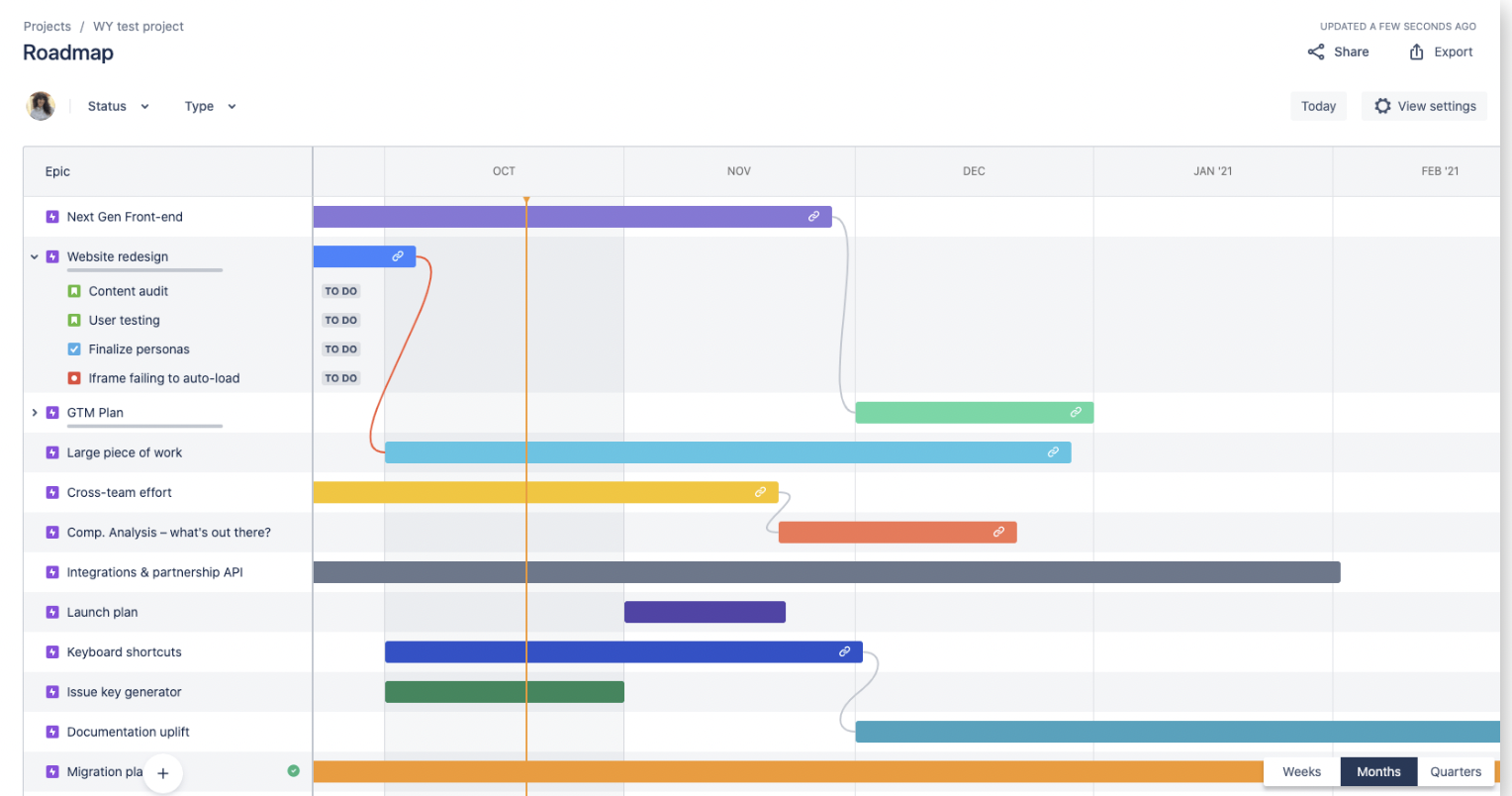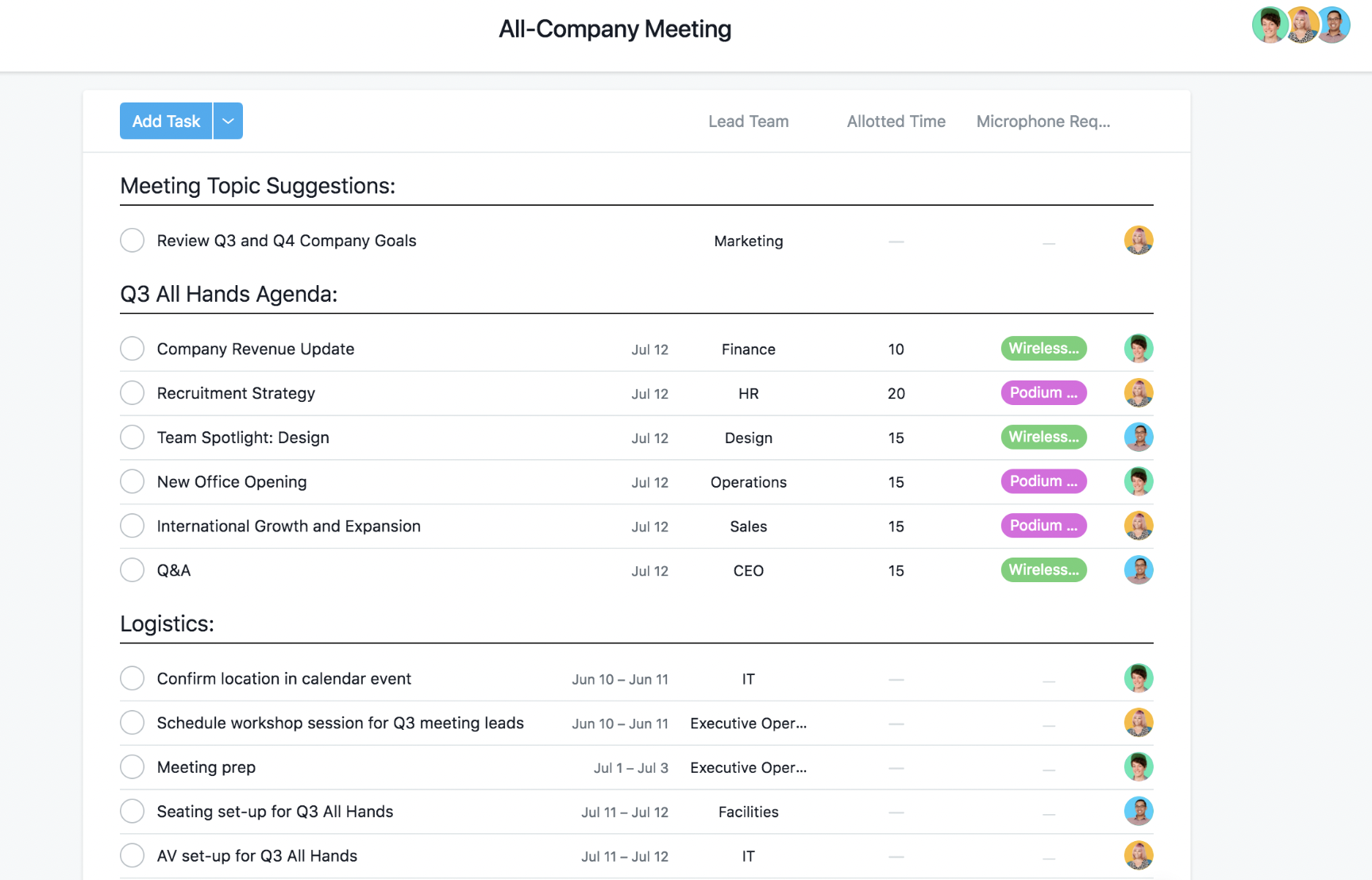Managing Software Teams: 7 Tips for Smooth Projects

Managing Software Teams: 7 Tips for Smooth Projects
In the software engineering world, people often focus on the technical side of development projects. This tendency makes sense. After all, the viability of the final product depends on the front-and-backend, UI/UX, and tech-based decisions made throughout the development process. However, any person or entity involved in a software development project shouldn’t overlook the importance of strong project management.
Effective project management’s correlation to software development success is clear. In fact, a 2020 report from the Project Management Institute found that 11.4% of project investment is wasted due to poor project management.
The report also showed that companies who undervalue the importance of project management see an average of 67% more of their projects fail than companies that don’t undervalue the discipline.
With these statistics in mind, you’re probably wondering about how to best manage your software team. This article will answer that question by outlining software management tips and best practices.
Hire the best software development firms on The Manifest.
Who is Part of a Software Development Team?
Before diving into how to best manage a software development team, it’s important that we go over the actual hierarchy of the team. Having a clearly-defined chain of command is key to proper project management.

Technical Team
In general, the majority of the people who make up your software development team will be the members of your technical team, including the following:
- software developers
- UI/UX designers
- quality assurance specialists
- software testers
Each of the professionals working in these areas should report to a team lead.
Business Analyst
Your program team should have at least one business analyst as well.
While the rest of your team is working on building the solution, the business analyst will track schedule and cost data to ensure that all areas of the project are running smoothly and that the final deliverable will be provided without issue.
Project Manager
The overall lead for your software development project will be the project manager.
A project manager is the main person responsible for the planning, execution, monitoring, control, and closeout of a software project.
Internally, they work with the team leads and business analysts to ensure all activities being done on the project are within the project’s scope and are being completed on time and within budget. Externally, they communicate directly with stakeholders to keep them apprised of project progress.
During the development phase of a software development project, the project manager will be the one managing the project. However, as the solution transfers to the maintenance stage of its lifecycle, the product manager will take over.
Product Manager
A product manager manages all aspects of a software’s strategy, roadmap, and features throughout its lifecycle.
As such, they will be responsible for managing the teams that keep the product functional from when it is launched until it is retired.
Top Qualities for Team Management
As a project manager, one of your main goals should be to foster an environment that encourages collaborative teamwork. To do so, you should focus on certain qualities when managing your team.
Methodology-Focused
First, you should employ a project management methodology. Having a pre-set system by which you can build project-specific workflows and measure the success of your efforts will be helpful in guiding your team through the development process.
One popular methodology in the software development world is agile. This methodology charges your team with delivering work in small segments known as sprints rather than in a full-scale product launch. In doing so, the project results can be effectively evaluated throughout the development process.
There are two sub-methodologies within the agile mindset: scrum and kanban.
- Scrum takes the sprint part of agile to heart, with each sprint being isolated and treated almost as a separate project from the others.
- Kanban focuses on the fluidity and transparency of agile, mapping tasks on kanban boards to illustrate the status of each component of the project.
Whichever project management methodology you choose, you should also imbue continuous process improvement into team workflows.
Encourages Continuous Improvement
Encouraging your team to develop and share templates for any integrations or other repetitive processes, for instance, will not only help maximize productivity on your current project but will also make your team more effective for any future projects that use similar processes.
Automation-Focused
Automation is another process improvement area that can strengthen your project management prowess.
Either by identifying opportunities for external software solutions to be implemented or for internal ones to be created, your team can improve their day-to-day workload and efficiency by embracing automation.
Collaboration-Centered
Regardless of any specific project management initiatives you undertake, the most important quality of strong project management is encouraging collaboration.
All software development projects are team projects, so you won’t be successful unless your team is comfortable working together and sharing ideas to improve the overall know-how of the group.
How to Manage a Software Development Team?
Even with the qualities listed above in mind, project management for a software development team may still seem like a daunting task.
Here are 7 tips to make your software project management experience a more pleasant one:
- Avoid micromanagement
- Make timelines clear with a project roadmap
- Identify possible roadblocks early
- Schedule meetings, check-ins, and standups
- Accommodate remote teams
- Select and track metrics
- Use project management tools
Read on for a more in-depth discussion of each tip so that you can work them into your project management approach.
1. Avoid Micromanagement
In any management setting, micromanagement is a detrimental practice. In a collaboration-heavy setting like a software development project, though, the practice can spell doom for your entire organization.
Simply put, micromanagement refers to the practice of a team lead over-supervising their team. Leaving the door open for frequent criticism and over-correction, micromanagement can lead to burnout among your team and even cause them to seek a new job.
Micromanagement has a strong reputation as a destructive practice. In fact:
- 71% of those surveyed in a recent Trinity Solutions survey who had experienced micromanagement felt it interfered with their job performance
- 85% said it hurt their morale
- 69% considered a career change
- 36% actually left their companies
In avoiding micromanagement, be sure not to under-supervise your team. A Gallup poll found that almost half of employees only receive feedback from their manager a few times a year or less. A lack of guidance can lead to the same sorts of job satisfaction problems micromanagement does.
Instead of micromanaging employees or leaving them on an island to fend for themselves, software project managers should strive to coach their teams to success.
You and your leadership team need to strike the balance between serving as a resource when challenges arise and trusting your team to excel at the jobs you’ve hired them to do.
2. Make Timelines Clear with a Project Roadmap
Another aspect of strong project management is setting clear expectations for deliverable deadlines. The most effective way for you to do this is to create a clear project roadmap.
This project roadmap should serve as a schedule for ideal project progress by mapping out the proper sequencing of all the tasks that make up the project workflows. Estimates of how much of the team’s time will be needed for each task should also be incorporated into the roadmap.

Source: Atlassian
As you progress through the software development project, you should have your team take part in time tracking for each of the tasks in the roadmap.
That way, you can assess your performance against initial expectations and proactively plan for any challenges.
Your project roadmap should be written so anyone on the team, regardless of job function, can understand what is expected of everyone else on the team as well as how their work affects the others on the team.
3. Identify Possible Roadblocks Early
In any software development project, there are bound to be roadblocks that make your team’s path to completion more difficult than you initially expected.
These roadblocks may be rooted in the scope of the project itself. For instance, your team may have to learn new skills to complete some of their tasks. Inexperience combined with a potentially steep learning curve will leave the door open for schedule delays and cost overruns.
The challenges you face may also be situational. Any dependencies within your project schedule will mean that one task slipping could cause others to slip. This compounding of project delays is not an uncommon problem for project managers to face.
The best way to overcome these roadblocks is to anticipate them early. Maintaining a clear, thorough project roadmap as discussed earlier is a great way for you and your team to do this.
Not only will this schedule show you the potential downstream effects of any delays, but mapping out the entire project will also allow you to pinpoint potential pain points in the planning stage of the project.
With potential challenges in your view early on, you can be proactive rather than reactive in your response to them. In doing so, you’ll be able to find better solutions to these problems and help your team operate better overall.
4. Schedule Meetings, Check-ins, and Standups With a Purpose
We discussed the importance of maintaining a proper level of supervision to strong project management. In line with this goal, scheduling effective meetings, check-ins, and standups can be a huge difference maker for you and your team.
Simply putting these meetings on everyone’s calendars isn’t enough, though. In fact, a recent Clockwise survey found that 78% of people feel their meeting schedule is always or sometimes out of control.
However, 64% of people reported being excited to join a well-planned meeting in the same survey.
As you can see, making your meetings meaningful is key to having them actually help your team. Circulating a meeting agenda, using a project management platform, and checking in with meeting participants individually to review expectations beforehand can help your meetings run more smoothly.

Source: Asana
Whenever possible, your meetings should also be interactive. Rather than just having a manager or team lead lecture them, everyone involved in the meeting should feel like they have a platform to discuss relevant topics.
Having appropriately-scaled meetings is also important to effective project management. Not every meeting needs to be an all-hands meeting.
Standups with team leads and check-ins with direct reports can add just as much value as larger meetings without taking as much of your team away from their normal responsibilities.
5. Accommodate Remote Teams
Especially since the onset of the COVID-19 pandemic, offering a work environment that can accommodate remote work can be a huge differentiator in attracting and retaining top talent in any industry.
For tech companies, remote work is even more of an expectation. A McKinsey survey from 2022 found that work-from-home opportunities were available to 89% of respondents in “computer/mathematical” occupations as compared to a 58% average across all occupations.
Maintaining the IT infrastructure necessary to support remote work is important for software project management success.
This encapsulates both team-centric accommodations such as videoconferencing or chat software and cybersecurity accommodations such as VPN software.
Your team leaders will also need to make considerations for any remote workers on your team. Team meetings and work schedules should be designed to take remote employees’ time zones into account.
While doing so may lead to some scheduling difficulties, the advantages of bringing in the best possible talent via remote work should outweigh these challenges.
6. Select and Track Metrics
To ensure that your software development project is running well from start to finish and be proactive in improving processes for future projects, you and your team should pick metrics to track early on in the development process.
While analyzing metrics is important for optimal project performance, the practice shouldn’t be overly taxing on your team.
However, many software development teams don’t have the proper tools and workflows in place to effectively track performance.
In fact, over half of the participants in a recent study by Wellingtone did not have real-time access to project KPIs. Additionally, 36.2% of the participants noted that it takes them one or more days to manually generate project reports.
When picking statistical areas of focus, be sure to consider which metrics will matter most to your internal team and external stakeholders as well as what tools will be needed to track these metrics.
You should make sure that your team can regularly generate useful reports on these stats so that you can adjust any development activities as necessary.
7. Use Project Management Tools
Committing to a project management system is one of the best things a development manager can do to maximize working hours and team collaboration.
The benefits of project management software are well-documented. GoRemotely recently reported that 77% of high-performing project teams use project management software.
When selecting a project management tool, you and your team should consider aspects such as pricing, functionality, and compatibility with other tools you use.
The same tools won’t work for everyone, but here are a few project management software options that are sure to streamline processes for all team members involved:
Asana
Asana is a project management tool with a task management focus. The software allows processes to be broken down into individual tasks and assigned and visualized as a part of larger workflows on a board. It also includes messaging and file-sharing functionality.
Slack
Slack is a digital communication software designed to make professional collaboration as easy as possible. On its own, the app allows for persistent topic-based chats, direct messaging, and file sharing. However, it can also be easily integrated with other software like Asana or Google Drive.
Trello
Trello is a project management tool built around the kanban approach to the agile project management methodology. It allows you to create digital kanban boards and build them out to incorporate project schedules, metrics tracking, and task automation.
Strong Project Management Helps Engineering Teams Do Their Best Work
Managing a software development project can be an arduous task for a project manager. Choosing a project management framework, committing to process improvement, and encouraging collaboration are key qualities to help propel your team to the finish line.
To capture these qualities in your project management style, be sure to avoid micromanagement, use a pre-set schedule to make expectations clear for your team, be proactive in anticipating challenges, schedule effective meetings, embrace remote work, learn from project metric analysis, and incorporate project management tools into your IT infrastructure.
Following these tips will allow you to be a strong project manager and should make a tangible difference in the success of your software development projects and your business’ bottom line.
Looking for a professional software development company? Connect with your ideal partner on The Manifest.
Additional Reading:
